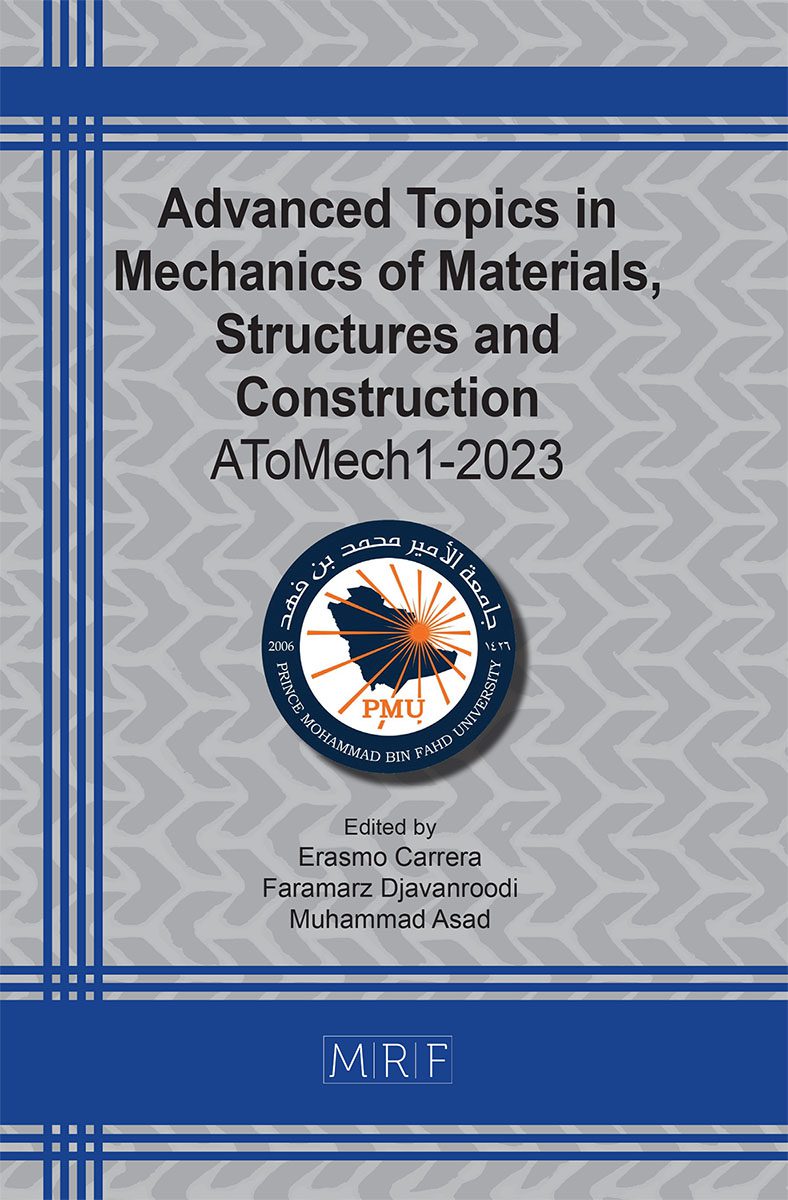Influence of canard geometrical configuration on the radar cross section
Gauri Patki, Attada Phanendra Kumar, Dineshkumar Harursampath
download PDFAbstract. The Radar Cross Section (RCS) of fighter jet hold a lot of importance in determining its air superiority. Electromagnetic simulations can be performed by employing numerical methods such as MoM, ray tracing methods or Physical Optics. Configuration of the wing is an important factor in determining the overall RCS of the aircraft. The current study explores the RCS of canard as placed in Chengdu J-20. The parameters are varied, the models are created and the simulations are conducted for monostatic RCS using far field approximation over a continuous frequency range using Physical Optics in FEKO simulator. The trends in results are analyzed and promising configurations are identified.
Keywords
Radar Cross Section, Canard Configuration, Physical Optics, Monostatic RCS, Far Field Approximation
Published online 8/10/2023, 13 pages
Copyright © 2023 by the author(s)
Published under license by Materials Research Forum LLC., Millersville PA, USA
Citation: Gauri Patki, Attada Phanendra Kumar, Dineshkumar Harursampath, Influence of canard geometrical configuration on the radar cross section, Materials Research Proceedings, Vol. 31, pp 227-239, 2023
DOI: https://doi.org/10.21741/9781644902592-24
The article was published as article 24 of the book Advanced Topics in Mechanics of Materials, Structures and Construction
![]() Content from this work may be used under the terms of the Creative Commons Attribution 3.0 license. Any further distribution of this work must maintain attribution to the author(s) and the title of the work, journal citation and DOI.
Content from this work may be used under the terms of the Creative Commons Attribution 3.0 license. Any further distribution of this work must maintain attribution to the author(s) and the title of the work, journal citation and DOI.
References
[1] “Stealth Technology”. Wikipedia. 2022.
[2] S. M., Vaitheeswaran & Gowthami, T. “RCS of the Tail Swept Flying Wing and Comparison with Milestone Aircrafts”. 2016.
[3] Michishita, Naobumi & Nguyen, Quoc Dinh & Yamada, Yoshihide. “Simulation and Measurement Methods for RCS Estimations of a Scale Model Airplane”. REV Journal on Electronics and Communications. 5. 10.21553/rev-jec.93. 2016. https://doi.org/10.21553/rev-jec.93
[4] Ya-Qiang Zhuang, Chen-Xin Zhang & Xiao-Kuan Zhang. “Dynamic RCS Statistical Characterization of Aircraft Target Using Gaussian Mixture Density Model (GMDM)”.
[5] Zhenghong, Gao, and Wang Mingliang. “An efficient algorithm for calculating aircraft RCS based on the geometrical characteristics.” Chinese Journal of Aeronautics 21.4, 2008, pp. 296-303. https://doi.org/10.1016/S1000-9361(08)60039-4
[6] Van Schalkwyk, Richard F., and Johan C. Smit. “Dynamic radar cross section measurements of a full- scale aircraft for RCS modelling validation.” 2017. https://doi.org/10.1049/cp.2017.0429
[7] Gou Zhanzhi, Chen Yingwen, MA Lianfeng. Radar cross-section effect of canard[J]. ACTA AERONAUTICAET ASTRONAUTICA SINICA, 2020, 41(6): 523485-523485.
[8] “Radar Cross Section (RCS)”. Electronic Warfare and Radar Systems Engineering Handbook. https://www.rfcafe.com/references/electrical/ew- radar-handbook/radar-cross-section.htm
[9] Mahafza, B.R., “Radar Systems Analysis and Design using Matlab,” CRC Press, 2000 Chapman &hall /crc, Boca Raton, London, New York, Washington, D.C. https://doi.org/10.1201/9781584888543
[10] “Basic Principles of The Method of Moments.” Emagtech Wiki. 2018. https://www.emagtech.com/wiki/index.php/Basic_Principles_of_The_Method_of_Moments
[11] David L. Lynch Jr., “Introduction to stealth systems”. An Introduction to RF Stealth (Radar, Sonar and Navigation), Institution of Engineering and Technology, 2021, pp. 42. https://doi.org/10.1049/SBRA540E
[12] Chibuisi, I. “Simulation of Radar Cross Section (RCS) of Spherical Objects”. International Journal of Trend in Research and Development. Vol 2(5), 2015.
[13] “Basic Principles of Physical optics”. Emagtech Wiki. 2018. https://www.emagtech.com/wiki/index.php/Basic_Principles_of_Physical_Optics
[14] Richardson, M. “Physical Optics Based Methods for Scattering Analysis”. Thesis. Stellenbosch University. March 2018.
[15] Altair Engineering Inc, Altair FEKO 2021.1.2 User Guide. 2021.












